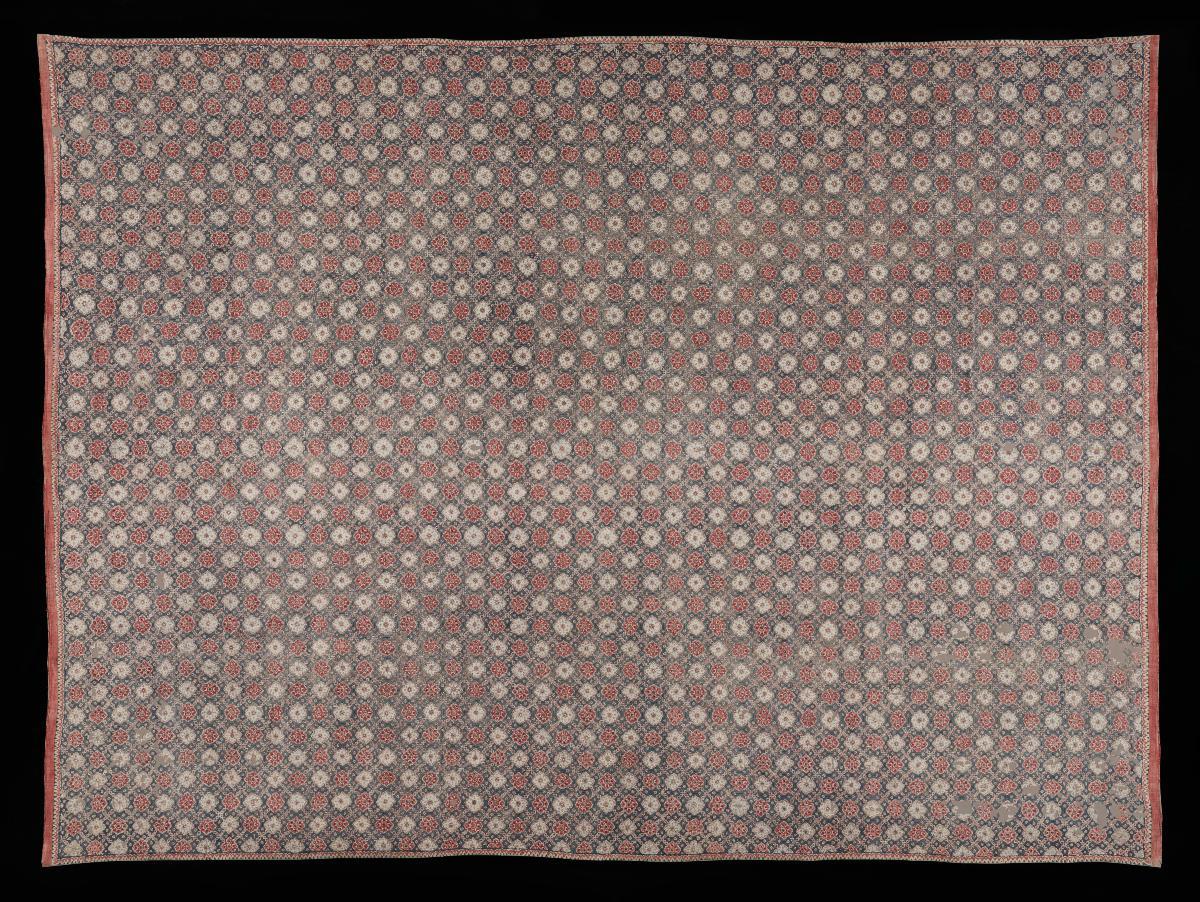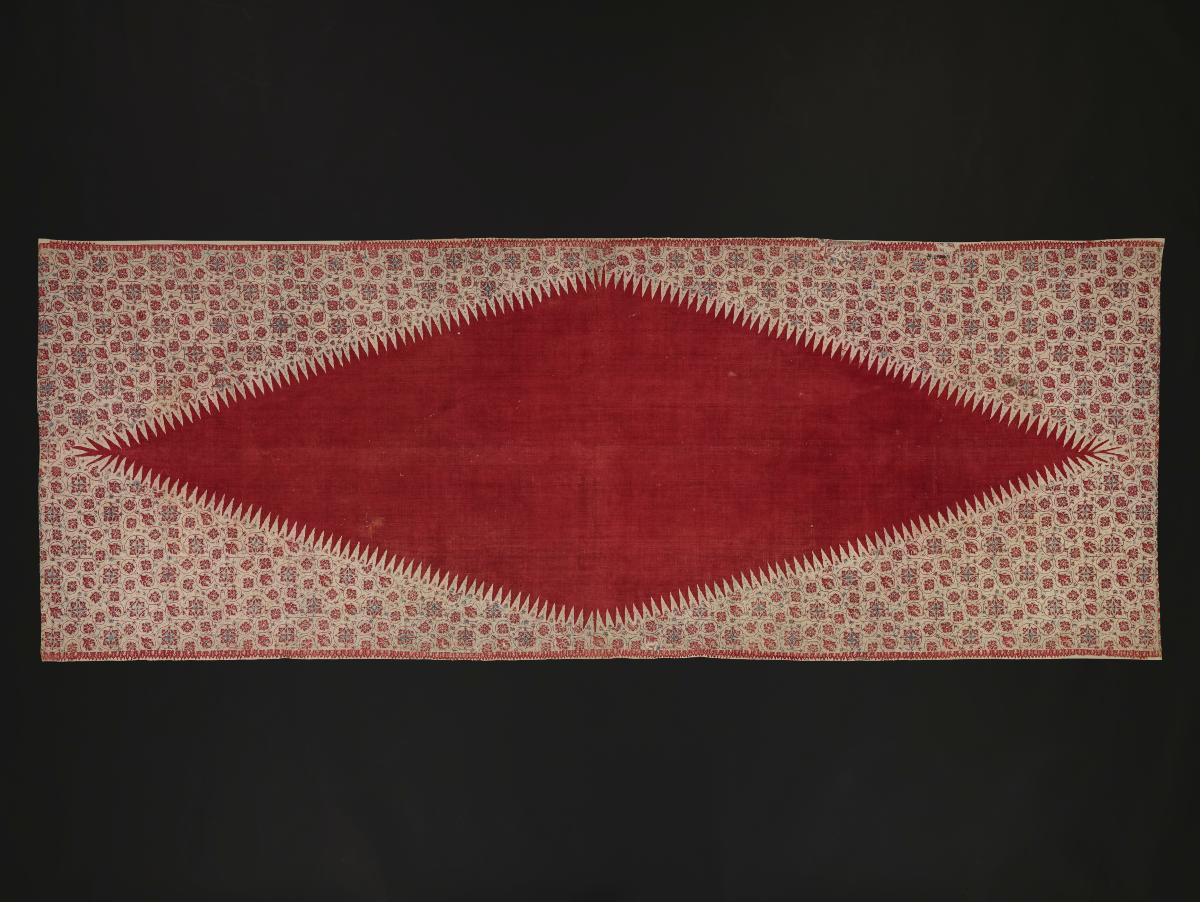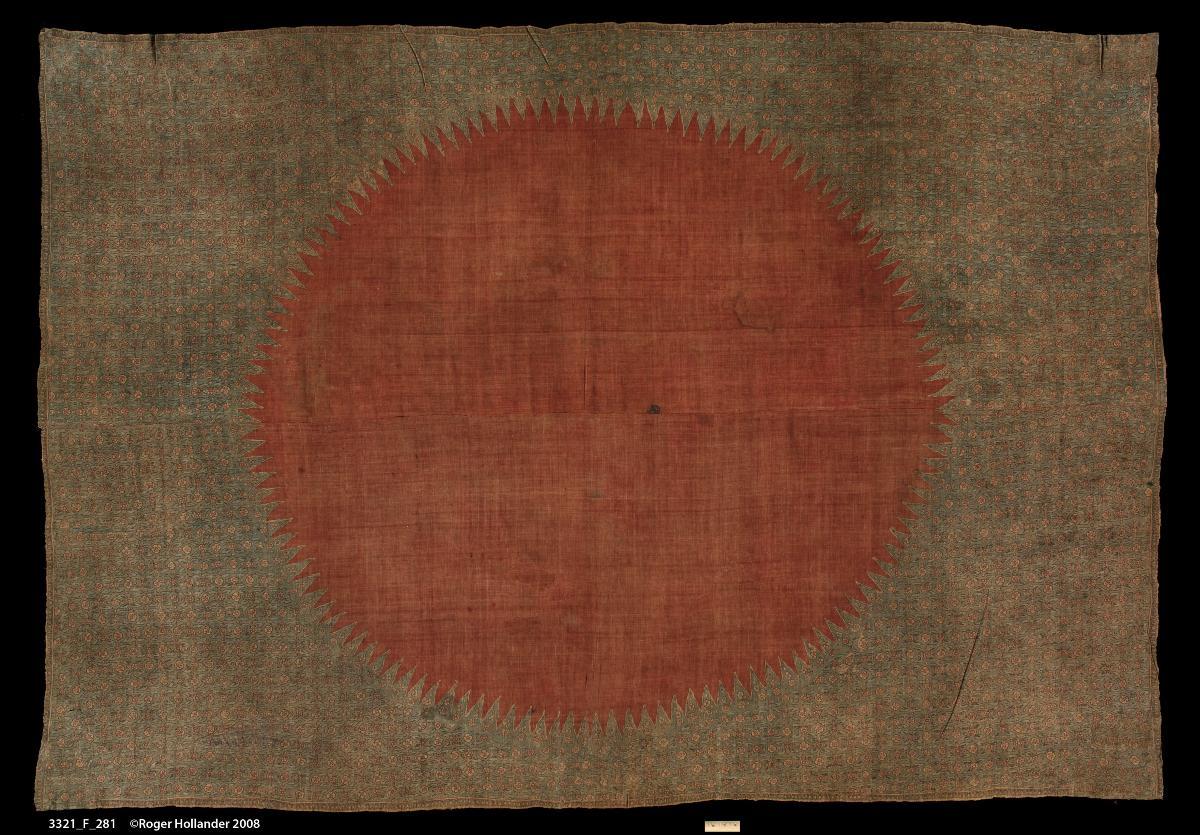This hanging of cotton tabby cloth is decorated by using the mordant and resist dyeing technique. It has a pattern of alternating solid red and cross-hatched blue star-like rosettes joined by interlocking stepped line forming a grid.Mordant-dyeing describes a process of using a fixing agent or mordant as a dye adherent whilst resist-dyeing uses either molten wax or moist mud to be applied to areas not intended to take up the dye. These two techniques may be used in combination or separately during the dyeing process of a textile. Large quantities of Indian textiles produced in various centres in Gujarat, the Deccan and Coromandel Coast were traded across Southeast Asia until the end of the 19th century. Among their functions, they served as attire for royalty and as diplomatic gifts, as displays on festive occasions, and as clothing for the populace at rites of passage and other ceremonies. These trade cloths had a strong influence on the development of Southeast Asia textiles as it is thought local makers began producing cloth, possibly borrowing patterns and motifs from earlier Indian examples, to make up for the shortage of the Indian ones that began to decline in numbers.















